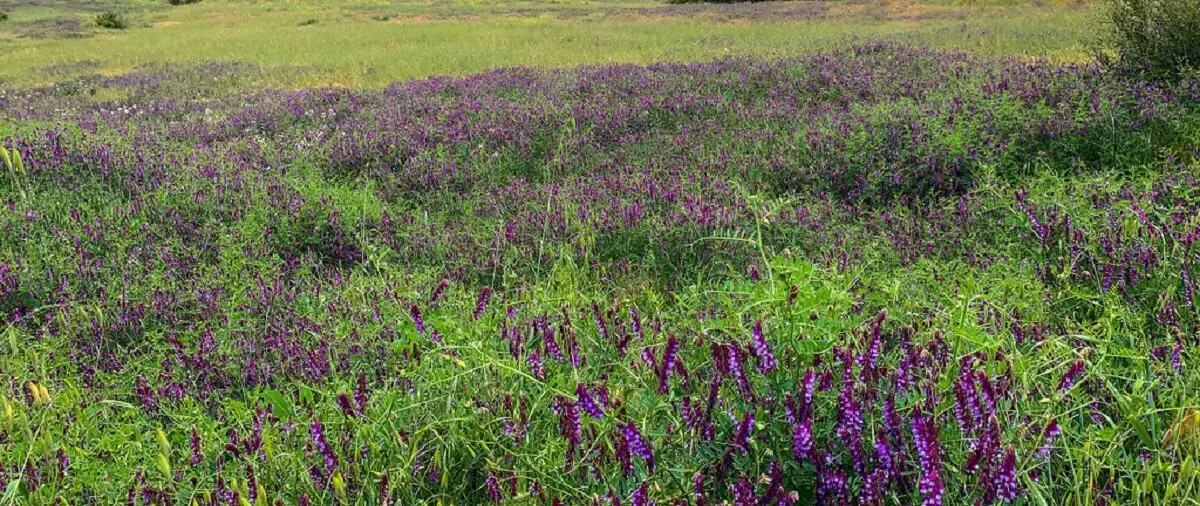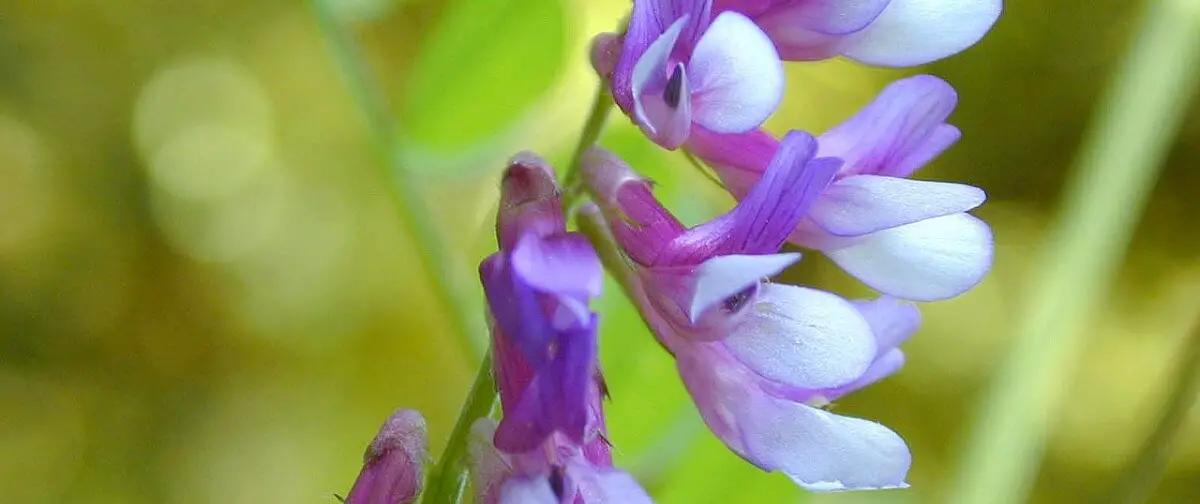Planting Hairy Vetch Guide What You Need To Know
Why Is Hairy Vetch A Good Green Manure

When we grow hairy vetch, our gardens can get many different benefits from them.
It is a viney legume it is an annual or biennial winter hardy cover crop that we can grow near the end of the season. It will help prevent soil erosion, limit runoff, and add more organic matter and nutrients into our soil.
Being from the legume family means that as we grow the plant, it will convert the nitrogen in the air with the help of Rhizobium bacteria into our soil for our next season's plants.
Many gardeners and farmers consider it one of the best nitrogen fixers that can help us reduce the use of chemical fertilizers.
The best pH is 6.0 to 7.0, but a pH in the range of 5 to 8 gets tolerated well by this plant.
You can use hairy vetch as a cover crop and grow it for use as green manure to add some nutrients to the soil and prevent weeds from moving in.
Hairy vetch also attracts many different beneficial insects. It feeds microorganisms to our garden while improving the overall health of our soil.
Hairy Vetch Growth Stages
- 1) Germination
- 2) Seeding growth
- 3) Late vegetative
- 4) Early bud
- 5) Mid bud
- 6) Late bud
- 7) First bloom
- 8) Mid bloom
- 9) Full bloom
Hairy Vetch Planting Dates
It is generally planted from early September to late October.
Where I live, I would need to have hairy vetch planted the last week of August to allow it to grow enough to protect my soil. Where I live, the first frost happens in October, so I would need to get it in so early.
I usually go with winter rye because it gets so cold where I live in the winter that hairy vetch has a low survival rate.
You will want to estimate the average time your area gets its first frost. Now take an average of 30 days before the frost date, and that is when you want to have your hairy vetch seeds planted.
How to Plant Hairy Vetch Cover Crop
For use as a cover crop, we will need to get the seeds in the ground at least 30 days before the first frost date to allow the roots to establish before the ground freezes.
If you want to add some fertilizer, you should add it before planting but ensure it is not high in nitrogen.
We also need our soil to have a pH level between 5.5 to 7.5 pH. Outside of this range may prevent them from having optimal growth.
Use a garden rake and remove .25-inches of soil from the area where you will plant the hairy vetch.
Now toss the seeds around the freshly raked area.
Use a hose and add water to the seeds just laid down to help them stay in place a little better.
Add the soil you removed back over the top of the seeds and give the ground another watering.
In the next ten days, if you notice any bare area with no sprouts, use a stick or something similar to make .25-inch holes and add some more seeds to ensure your soil is well covered.
In the spring, you need to mow the area before flowering. Now you can till the soil by putting the plant into the ground as a source of green manure.
Hairy Vetch Fertilizer Requirments
You are not going to need to add any fertilizer when you are growing hairy vetch.
If you want to add fertilizer to maximize its growth, focus on fertilizer with no nitrogen, something around an npk of 0-10-10 for best results.
Suppose you are planting it with a small grain. In that case, you will want to apply a second application of fertilizer with NPK 10-10-10 in the late winter to boost the forage production and extend the browsing period into spring.[8]
Hairy Vetch Germination Time
Multiple factors will alter how long it takes for our hairy vetch to germinate. The depth we plant it, the available moisture, and the temperature can change the germination speed we see.
Under ideal conditions, we should see our sprouts coming up within 10 to 14 days. To see sprouts within this time, we need the soil to be around 68 degrees F.
If we plant too late in the fall, the lower temperature of the soil may prevent it from sprouting until the spring.
How Tall Does Hairy Vetch Grow
Multiple aspects will determine the height of our hairy vetch depending on various factors. How long you let it grow and if it gets planted alone or with something that can provide structural support.
When planted alone and given enough time, it will reach around 2 feet tall.
Hairy Vetch Flower
The flowering process of the hairy vetch is very nice looking with its purple blooms. Using it as a cover crop, we want to prevent the plant from flowering.

If we let it flower in our gardens, it has already started dropping new seeds in our garden bed and can become quite painful to deal with.
Killing Hairy Vetch Cover Crop
The two most common methods to kill hairy vetch are mowing or using a burn-down herbicide for no-till plantings.
It will likely survive and regrow if you mow it down before it hits flowering.
No-till is an effective method to prevent erosion and weeds from moving in.
Rolling is currently being considered an alternative method of killing it.
What Are The Benefits of Hairy Vetch?
Being a legume family member will help increase the nitrogen in our soil while it is growing.
It works well when it is sown in with other small grains.
Protection for your garden soil in winter
Tilling it into your soil as green manure helps improve your soil's fertility.
Vetch can tolerate a high level of diverse soil conditions.
It can grow in low-fertility soils where other cover crops may fail.
It has rapid growth, and that lets it easily out-compete weeds.
Like other cover crops, it mixes well with other plants, especially small grains.
It improves our topsoil tilth, creating a loose and friable soil structure.
Grows well in most soil types.
It can thrive in acidic soils where Clover and Alfalfa do not grow well.
Summary
Hairy vetch is easy to grow and grows quickly during spring. You can use it as a cover crop or grow it at the end of the season and till it into your garden as green manure, further improving the fertility of our soil.
Adding green manure to the soil is a perfect way to keep our soil healthy and reduce our need for synthetic fertilizers later in the growing season.
One issue with hairy vetch the high chanceof it getting away from us since it is an indeterminate species contatly flowering and can become an invasive plant in our garden .
Similar Articles
Growing Scindapsus Aureum
Planting Winter Peas
Planting Partridge Peas
Planting Grass Peas
[1]https://www.gardeningknowhow.com/edible/grains/cover-crops/hairy-vetch-cover-crop.htm
[2]https://extension.psu.edu/hairy-vetch-as-a-crop-cover
[3]https://www.sare.org/publications/managing-cover-crops-profitably/legume-cover-crops/hairy-vetch/
[4]]https://crops.extension.iastate.edu/encyclopedia/hairy-vetch-cover-crop
[5]https://ag.arizona.edu/yavapai/anr/hort/byg/archive/growinglegumestoincreasesoilnitrogen.html
[6]https://extension.msstate.edu/content/hairy-vetch-vicia-villosa
[7]https://www.hort.purdue.edu/newcrop/afcm/vetch.html
[8]https://www.pennington.com/all-products/wildlife/hairy-vetch